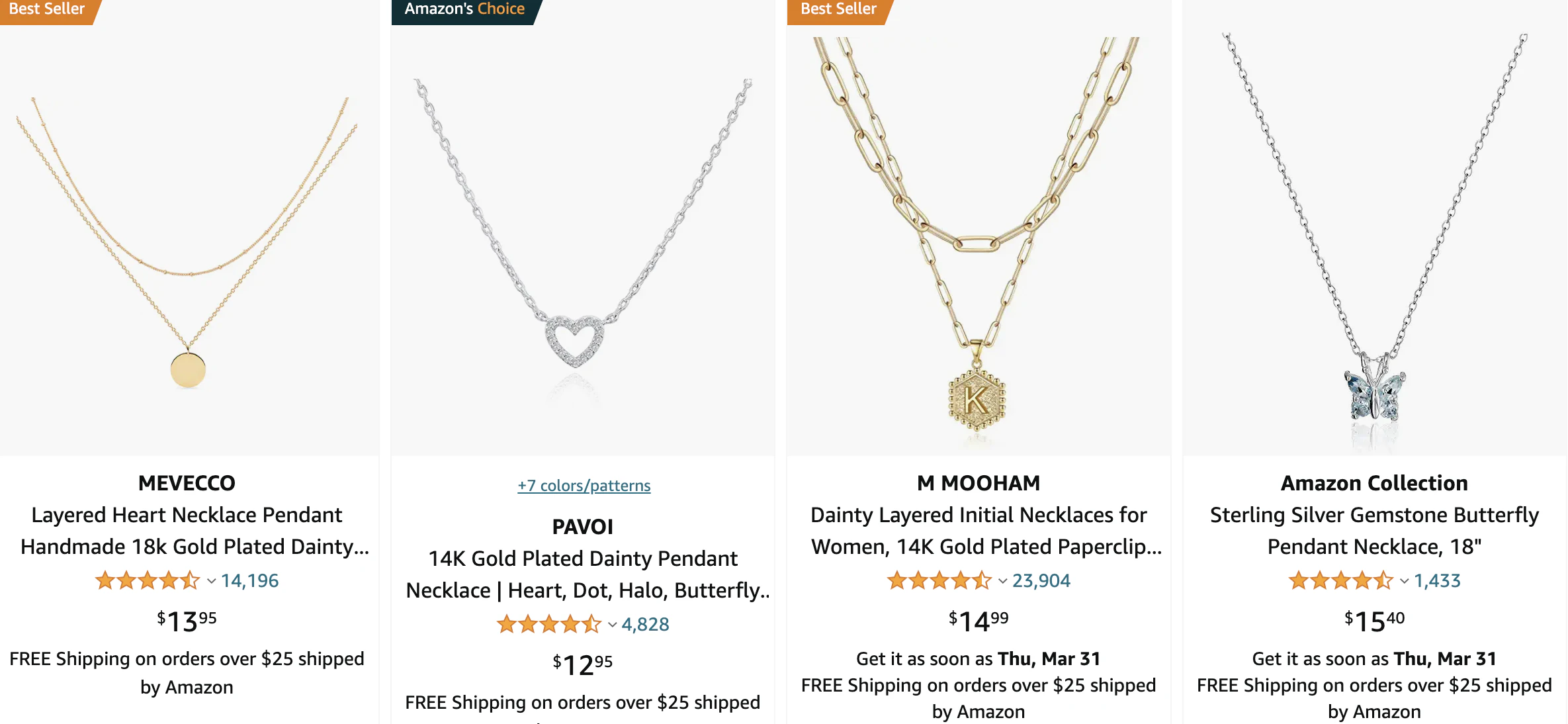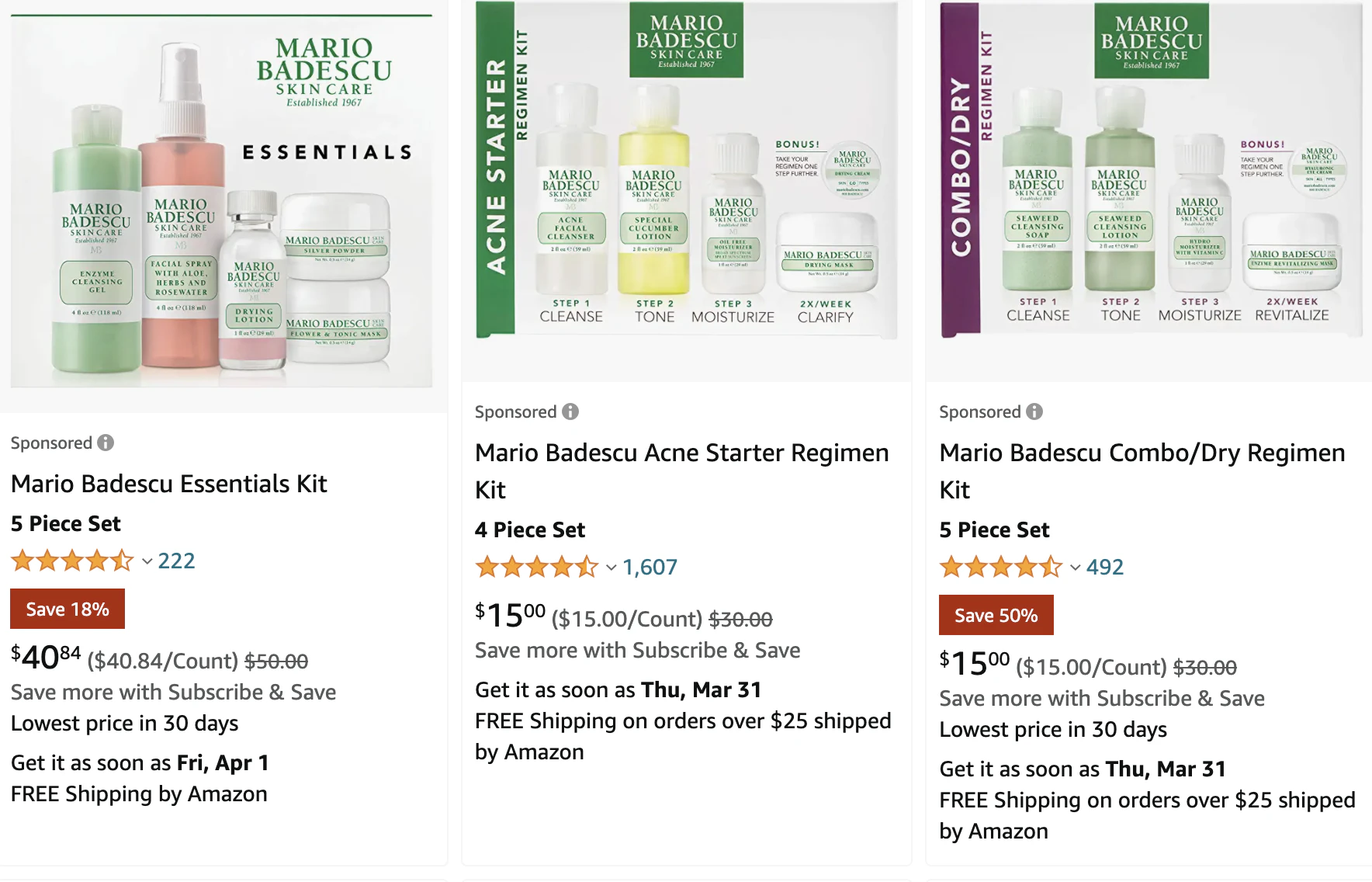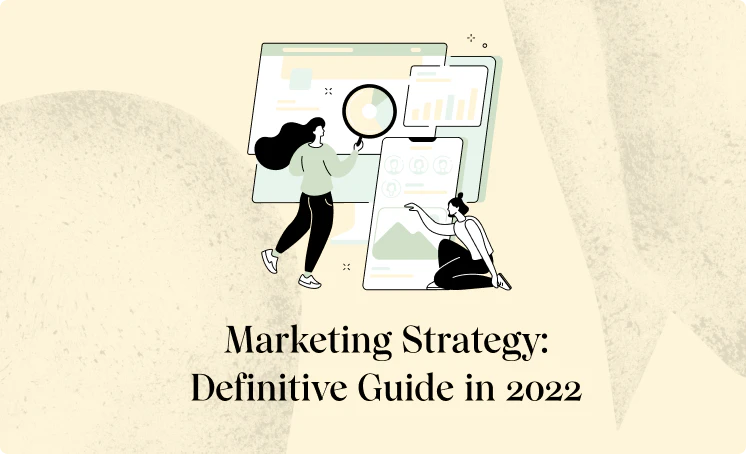Introduction
The Amazon flywheel is an unstoppable force. The momentum the marketplace has been able to build for itself is something any business would want to emulate.
Luckily, Amazon is supported by third-party sellers that are able to take advantage of its business model.
Are you curious about how you can use the Amazon flywheel effect to propel your business growth?
In this article, we’ll break it down for you.
What Is The Flyhweel Model?
What Is the Flywheel Model?
The Flywheel Model refers to a business that spends the time creating superior products and/or customer experiences that take a lot of time and effort upfront, but then uses the momentum it gains to grow faster.
Let’s say, for example, you start selling footwear and you have a customer who isn’t sure what size they are.
If you’re the only person managing all parts of your business, you may not think it’s worth your time to walk that customer through how to properly measure their foot and select their size.
But the Flywheel Model is built around situations just like that.
The theory is that if you take the time to provide that superior level of customer service to your first customers, then those customers will 1) become loyal to you and come back to purchase again and 2) will tell their friends about you.
Both of those things will start to generate more traffic, which should lead to more sales, which should lead to more positive reviews, which will get more people interested in your product thus creating the flywheel that fuels itself.
What Fuels The Amazon Flywheel?
Amazon has seen substantial growth based on where it focused its efforts from the beginning.
They knew that the customer experience for ecommerce wasn’t always great. They focused on improving the pieces of the experience where other businesses were failing.
Amazon’s flywheel is based on:
- Selling at the lower price point to get interested traffic.
- Create a wide selection of products by including third-party sellers.
- Improving customer experience with reliable and fast delivery.
The more traffic Amazon was able to generate through lower prices, the more appealing it became to third-party sellers to use as a marketplace, the more it was able to improve its customer experience.
How Can You Take Advantage Of The Amazon Flywheel?
Amazon rewards sellers who help drive their business model, so how can you take advantage of the Amazon flywheel?
Choose Your Price Wisely
Pricing your product can be tricky. You want the price to be attractive to potential customers, but you are ultimately running a business that requires enough profits to function.
Note how all the top results in the search below are similarly priced.

We know Amazon considers price when determining organic search results and uses it to determine what products get the Amazon Choice badge.
But it isn’t just the lowest price that wins.
Many of the products that are highest in the search result are priced mid-range.
Research has shown that when shopping we like to choose the product that falls somewhere in the middle. Price too low and shoppers may question the quality of your product, price too high and it will be harder to justify why it’s worth it.
Given all of that information, you’ll need to consider how your competitors have priced their products.
If your product is revolutionary and has no similar products to compare to, consider alternative solutions to the problem your product solves and how they are priced.
Sell Multiple Products

Another vital piece of the flywheel is the wide selection of products Amazon has been able to amass.
Selling more than one product helps Amazon further expand its offerings, but it also helps you to expand your brand so that customers see you as more than just another seller on the Amazon marketplace.
You want to focus on products that can be linked together either by the problem they solve or the niche they are in if you are trying to build up a known brand.
If you sell one product that over-delivers to a customer, then next time they see your brand linked to another product they will be more likely to buy.
By following the same principles that Amazon does, you’ll be feeding your own flywheel.
Remember That Everything Is Connected
Sometimes sellers forget that everything on Amazon is connected.
For example, optimizing your main image to increase your CTR will likely impact your sales which can cause you to get a Best Seller badge. If you get a Best Seller badge, that will further increase your traffic (clicks) to your listing, and the circle continues.
The factors that the algorithm considers for organic ranking are also considered when determining Amazon badges.
No part of selling on Amazon operates in a bubble.
Everything you do will have an impact across all Amazon processes.
That means that all of your successes will breed more success, but any areas that are lacking will cause a block in your product’s performance.
Benefits Of Using The Amazon Flywheel For Your Business
Brands have recognized that they can use the Amazon Flywheel to benefit their own business and have flocked to the platform.
So, what exactly are the benefits to your business?
1. Increased Traffic
Amazon had over 2 billion website visits a month in 2020. You cannot replicate that kind of traffic anywhere else.
Amazon knew that they could leverage their traffic to encourage third-party sellers to join their platform, and they continue to do so.
Yes, there will be competition obviously, but with that number of visitors, you only need a tiny fraction and you’d still be able to grow a substantial business for yourself.
2. Improved Visibility
With all of that traffic, you have a massive opportunity to improve your brand visibility to people who are actively looking to make a purchase.
Many brands focus exclusively on social media to improve their visibility and don’t consider the ways they can do so on the marketplace, even though Amazon’s traffic often has higher buying intent.
There are a few ways Amazon helps brands grow their visibility.
One is through joining the Amazon Brand Registry, which allows them to protect their trademark and add A+ content to their product pages.
Another way is through running promotions that Amazon will promote on its deals page. This page reaches buyers that may not have been looking for your product before but may buy because people love trying products when they feel like they are getting a good deal.
Then, of course, there is the native PPC ads platform. We’ll discuss that more later.
3. Built-In Customer Experience
Amazon has made certain parts of the customer experience easier on sellers.
Could you afford to ship your products in the two-day timeframe without utilizing FBA?
Maybe, but probably not as effectively.
In addition to the streamlined shipping options, the front end of the customer experience is also managed.
Customers know how to navigate Amazon, they know how to use the search bar and where to find information in the product listing.
This helps make potential customers feel more comfortable when they are buying.
Amazon provides you all the tools to make your customer’s experience a positive one, making them want to come back and buy more.
4. Growth Opportunity
All of the previously listed benefits combine into possibly the biggest benefit – growth.
Amazon provides incredible opportunities for growth that you won’t find through your own site or even other ecommerce sites.
The online marketplace has perfected the model, understanding that by empowering third-party growth it’s building a stronger business for itself.
How To Create Your Amazon Flywheel
Now that you know the power of the flywheel, how can you create one for yourself?
1. Go Find Your Customers
Amazon has every kind of customer you could dream of.
But you’re going to have to 1) understand who you’re trying to target and 2) how to get them to want to purchase your product over the other options on the market.
When building out your target persona, you’ll need to consider not just their demographic data – age, gender, salary, location – but also their other interests and what problems they are trying to solve.
Without knowing what their problems are, you won’t be able to sell them anything.
You need to learn why the other products available aren’t working for them and position your product to be better.
You can find this information by reading reviews for similar products and looking through forums and group discussions already being had by your audience.
Take the information you find and use it to write your product description. That way when your customers find your products they will feel like you understand.
2. Gain Momentum
Getting the flywheel to start moving forward is the most difficult part of the process.
At first, you may only get traffic if you pay for it and the sales will dry back up when you stop.
That’s normal for everyone.
You have to keep pushing forward until you gain enough sales and product reviews for the algorithm, and your potential customers, to take notice.
To help get you your first reviews, you can sign up for Amazon’s Early Reviewer or Vine programs.
Be aware that these reviews will be completely honest, so there is no guarantee the programs will generate positive reviews. But if you are confident in your product, it is a place to start building momentum for future traffic and sales.
3. Check Your Results
If there is any block in your flywheel, all momentum will stop.
Once you have the ball rolling, you will need to consistently observe the results, and try to learn from them.
Each time you make a change, you need to check that there was no negative reaction.
Without closely watching your metrics, you may not know what causes a sudden surge in sales, or a decline. If you don’t know you can’t double down on what works or fix something that doesn’t.
Amazon helps you by providing information about clicks and conversions for your listings.
If you run PPC campaigns, you’ll gain even more information about what works and what doesn’t that you can then use for further campaigns and to help drive organic growth.
4. Tweak Your SEO
Keywords are king when it comes to Amazon PPC and organic ranking.
Your keyword research must be expansive, and you need to seek out both broad and long-tail keywords.
When you are newer to the marketplace or are adding a new product, you’ll want to start with long-tail keywords that will have lower competition. Then as your product listing grows, you can transition to targeting broader keywords with higher search volumes.
Don’t think that the keywords you enter when you first develop your listing will be the keywords you will always use.
Not only will you need to transition the keywords, but you will need to remove keywords that aren’t helping your listing to make room to test new keywords.
5. Manage Your Brand
Since customer reviews are factored into the algorithm and part of the buying decision for so many, that is one of your biggest chances to make your brand stand out above your competitors.
That’s not the only thing that matters though.
Responding to customer inquiries, both on your product pages and behind the scenes, is another way to manage your brand.
Not responding promptly with a friendly, professional tone makes it seem like you don’t value your customers.
As a seller, you may not want to respond to a customer question that may cause that person or other people who read it on a product page not to buy. However, that strategy makes you appear to be avoiding your customers and not being transparent.
Even if the answer to the question won’t be what they want to hear, it shows that you stand behind your product.
It’s okay that it’s not for everyone. That person likely wouldn’t have had a positive experience with your brand if they would have purchased, resulting in a possible negative review, which is more harmful to your brand than them not purchasing.
Your Business Flywheel In Action
To keep fueling your flywheel, you’ll need to know what tactics to test and how to optimize your growth model for the long haul.
There are a handful of aspects you should put your focus on.
MAKE YOUR CUSTOMER EXPERIENCE BETTER
As we noted, Amazon helps sellers with some of the big pieces of the customer experience, but this also means that all brands are the same.
You’ll want to do some things that help your brand stand out in the crowd.
But before you plan your customer experience, you need to get familiar with Amazon’s Terms of Service so that you stay within their rules. Amazon has strict guidelines around how sellers can and cannot interact with customers.
Some of the pieces of your customer experience you control are:
- Your listing images and copy
- Your responses to customer inquiries
- Your product packaging
- Amazon program you’re enrolled in (like FBA, Brand Registry, Subscribe & Save) and utilizing the added benefits they offer.
Setting up a branded customer experience will help drive repeat and referral traffic to your flywheel.
ALWAYS BE TESTING VARIABLES
Never assume that any piece of your listing or experience is as good as it could be without testing it.
Some sellers set up their listing and if they start getting a few sales, never touch it again. That could be costing you growth.
You should be testing keywords, your product title, your product descriptions, product images, and A+ content (if applicable) on a regular basis.
If you’re using ads, try testing different types of PPC ads as well as types of bidding, like dynamic bidding or bidding by placement.
When testing, remember to look at only one variable per experiment so you can hone in on what is moving the needle.
KNOW WHERE YOU STAND
Knowing what elements to test is half of the battle when optimizing your listing.
You shouldn’t be testing without knowing your metrics.
Do you need to improve your traffic or should you be concerned about increasing your sales conversions? Each of those will require a different set of tests.
You’ll need to monitor what products are your top sellers that drive most of your revenue so that you can focus your energy on those listings first.
Staying informed on your product’s lifecycle and overall metrics will help you keep the flywheel flowing.
PLAY NICE WITH THE ALGORITHM
When you are taking advantage of the flywheel effect on Amazon, you have to play nice with the way Amazon operates.
Due to the number of products listed on Amazon, it relies larger on various algorithms to make decisions.
You already know that keywords in your title and listing matter, but that’s only one factor.
The algorithms favor products that:
- Have strong sales
- Are Prime-eligible
- Have good reviews
At the end of the day, Amazon wants to make money and the best way to do that is to put products in front of customers that they want and are likely to buy.
THINK ABOUT YOUR BRAND LONG-TERM
Remember how Amazon focused on creating a customer experience above everything?
Well, that’s why it’s the behemoth that it is today.
If Amazon was only focused on profits and not on the customer, it wouldn’t have been able to acquire the number of shoppers it needed to fund the model.
For brands to last long-term, you have to make your customers love you.
The Flywheel Management Mindset Shift
Every piece of the flywheel is fed by the piece before it.
If traffic stops coming, then of course sales won’t happen and third-party sellers will not have a reason to sell on the marketplace, and customer experience won’t matter at all.
When managing your flywheel, you have to consider what exactly is powering the next part.
For instance, what is getting the traffic to your product listing?
Maybe you’ve found unique long-tail keywords that have lower competition, or maybe your product has a unique feature that none of the similar products on Amazon advertise.
Ultimately, you need to learn what:
1. Drives traffic to your listing.
2. Generates positive reviews.
3. Makes customers return to buy from you again.
Monitoring and managing those things will allow you to follow in Amazon’s footsteps.
You could expand your product lines and manufacture at lower costs, which you can then pass on to your customers.
Instead of seeing your efforts as an individual action, you have to think forward through how each process is connected.
This will let you see the bigger picture and focus on the most important aspects that drive momentum in the long run.
Developing A Flywheel-Focused PPC Strategy
Starting strategic PPC campaigns can help to set your flywheel in motion.
When no one knows your product is available, obviously no one is going to buy it. PPC campaigns can help to even the playing field by driving traffic to your listings.
The key is developing PPC campaigns with an ACoS that you can maintain while trying to increase visibility.
You need to be sure you aren’t bidding too high or focusing on the wrong keywords.
When you aren’t familiar with Amazon PPC, this will be difficult for you to do on your own.
If you’re serious about growing your brand on the Amazon marketplace and want a customized strategy to help you, let us take a look and see what we can do to help.
Final Thoughts
The Amazon flywheel is one of the most respected business models.
The marketplace knew that if it could get enough happy customers visiting, then sellers would soon follow, leading to even more customers and the ability to showcase a variety of products at the best prices.
You can learn from, and implement, the flywheel model in your own business.
Get traffic going to your listings to increase sales and reviews so that the algorithm will send you more traffic.
It will take upfront effort to get that initial traffic, but once you find success, it will continue to feed itself.













.webp)

.webp)








.webp)









































.webp)






